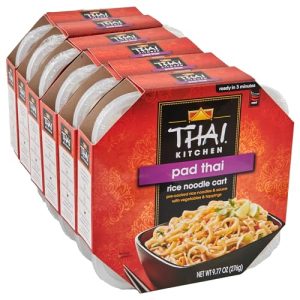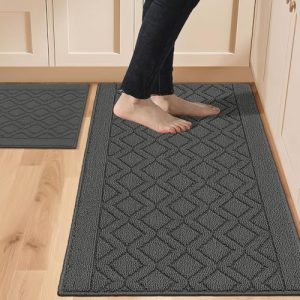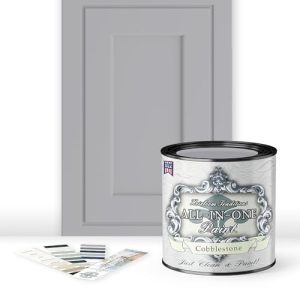You might think carrying a knife in the kitchen is simple, but doing it the right way can keep you safe and make your cooking smoother. How you hold and move with your knife affects not just your safety but also your confidence while preparing meals.
If you want to avoid accidents and work like a pro, understanding the best way to carry a knife is a must. Keep reading, and you’ll discover easy tips that will change how you handle your kitchen knives forever.
Choosing The Right Knife
Choosing the right knife can change how you work in your kitchen. The right knife feels natural in your hand and matches the task at hand. It’s not just about sharpness but about comfort, control, and efficiency.
Types Of Kitchen Knives
There are several types of kitchen knives, each designed for specific tasks. Knowing which one to use can save you time and prevent accidents.
- Chef’s Knife:The most versatile knife, perfect for chopping, slicing, and dicing.
- Paring Knife:Small and precise, ideal for peeling and detailed work.
- Serrated Knife:Great for cutting bread and foods with a tough exterior but soft interior.
- Utility Knife:A mid-sized knife for tasks too big for a paring knife but too small for a chef’s knife.
- Boning Knife:Designed for deboning meat and fish with its narrow, flexible blade.
Think about the knives you reach for most. Are they doing the job easily? If not, it’s time to rethink your knife choices.
Knife Size And Purpose
The size of your knife should match the job you’re doing. Using a large chef’s knife to peel a small fruit can feel awkward and unsafe.
| Knife Size | Ideal Use | Why It Matters |
|---|---|---|
| 3-4 inches | Peeling, trimming, detailed work | Offers precision and control for small tasks |
| 5-7 inches | Slicing vegetables, fruits, small meat cuts | Balances control and cutting power |
| 8-10 inches | Chopping, dicing, larger cuts of meat | Provides leverage and efficiency for big tasks |
Have you noticed how your comfort changes with different knife sizes? Choosing the right size can reduce strain and increase your speed.
Proper Grip Techniques
Holding a kitchen knife correctly improves control and safety. Proper grip techniques reduce hand fatigue and prevent accidents. Two common grips suit different tasks and skill levels. Understanding these grips helps you handle knives confidently.
Pinch Grip Method
The pinch grip offers the best control and precision. Hold the blade between your thumb and side of your index finger. Wrap your other fingers around the handle firmly. This grip keeps the knife stable during cutting tasks.
Use the pinch grip for chopping, slicing, and dicing. It allows smooth, even cuts and reduces slipping. Beginners may find it tricky at first but can improve with practice.
Handle Grip Method
The handle grip is simple and comfortable for many users. Hold the knife by wrapping all fingers around the handle. Your thumb rests on one side, and your fingers grip the other side.
This grip suits tasks needing less precision, like stirring or light chopping. It feels secure but offers less blade control than the pinch grip. Good for casual cooks and quick kitchen work.
Safe Carrying Methods
Carrying a knife safely in the kitchen is essential to prevent accidents and maintain control. Whether you’re moving from the prep area to the stove or handing a knife to someone else, the way you hold and protect the blade matters. Paying attention to safe carrying methods helps you stay confident and reduces the risk of injury.
Holding The Knife Correctly
Grip the knife firmly by the handle, keeping your fingers wrapped securely around it. Avoid holding the blade itself—this can cause serious cuts and lowers your control over the knife’s movement.
Keep the knife pointed downwards and close to your side when walking. This position minimizes the chance of accidentally bumping into something or someone.
Have you noticed how a relaxed, yet firm grip improves your balance and maneuverability? Practicing this hold can make carrying knives feel less intimidating and more natural over time.
Using A Knife Sheath Or Cover
A knife sheath or cover is a simple tool that adds an important layer of safety. It protects both you and others from the sharp edge while transporting the knife.
Look for sheaths made of durable materials like plastic or leather that fit your knife snugly. If you don’t have a sheath, wrapping the blade in a thick cloth can also work temporarily, but it’s less secure.
Have you ever experienced a slip or accidental cut when carrying a knife without a cover? Using a sheath helps prevent these moments and keeps your knives in better condition by protecting the blade.
Transporting Knives Within The Kitchen
Transporting knives within the kitchen demands your full attention. It’s easy to underestimate the risk of carrying a sharp blade from one spot to another. Paying close attention to how you move helps prevent accidents and keeps your workspace safe.
Walking With A Knife Safely
Hold the knife firmly by the handle with the blade pointing downwards. This position minimizes the chance of accidentally cutting yourself or others nearby. Keep your free hand away from the blade’s path and watch where you’re going.
Keep your steps steady and avoid distractions. If the kitchen is crowded or you need to pass by others, communicate clearly by saying something like, “Knife coming through.” This simple action can prevent unexpected collisions.
Avoiding Common Mistakes
Many people carry knives with the blade facing upwards or pointing forward. This increases the risk of injury if you trip or bump into someone. Always remember: blade down and close to your side.
Another common error is walking too quickly or multitasking while holding a knife. Focus solely on moving safely. Putting down the knife and walking empty-handed can sometimes be the smarter choice if you need to navigate tricky spaces.
Knife Storage Tips
Proper knife storage is essential for safety and longevity. A well-stored knife stays sharp and is less likely to cause accidents. The way you store your knives can also make your kitchen more organized and efficient. Let’s explore some effective knife storage tips.
Magnetic Strips Vs. Knife Blocks
Magnetic strips are a popular choice for many kitchens. They save counter space and keep knives visible. You can easily grab the knife you need. But ensure the strip is strong enough to hold your knives securely. It should also be mounted at a safe height.
Knife blocks offer a more traditional storage solution. They protect blades from damage, keeping them sharp longer. Ensure the block is clean and dry to prevent bacteria growth. Place it in a spot that’s easy to reach but away from the edge of the counter.
Storing Knives Out Of Reach
Keep knives out of reach of children. Store them in a high cabinet or a locked drawer. Consider using a child-proof latch for added safety. This keeps your kitchen safe for little ones.
If you have limited space, consider a wall-mounted magnetic strip. Mount it high enough to be out of children’s reach. Always prioritize safety when deciding on knife storage solutions.
Maintaining Knife Safety
Maintaining knife safety in the kitchen goes beyond just handling the blade carefully. It involves routine care that keeps your knife in top condition and prevents accidents. Paying attention to how you sharpen, clean, and store your knives can make a huge difference in your kitchen experience.
Regular Knife Sharpening
Dull knives are more dangerous than sharp ones because they require more force, increasing the risk of slipping. You should sharpen your knife regularly to keep the edge clean and effective.
Try using a whetstone or a quality sharpening tool. Notice how a sharp knife glides through vegetables with ease—this not only improves safety but also saves time and effort.
Have you checked your knife’s sharpness lately? A simple paper test can show if your blade needs attention: if the knife tears the paper instead of slicing smoothly, it’s time to sharpen.
Cleaning And Drying Practices
Cleaning your knife properly is crucial for safety and hygiene. Always hand wash your knife immediately after use with warm, soapy water—avoid putting it in the dishwasher where it can get damaged or cause injury.
Dry your knife thoroughly after washing to prevent rust and maintain the blade’s integrity. A wet knife handle can slip easily, so dry both the blade and handle carefully.
Think about where you place your knife after cleaning. Leaving it wet or storing it carelessly can lead to accidents or damage. Do you have a safe spot ready for your knife?
Frequently Asked Questions
How Should I Hold A Knife Safely In The Kitchen?
Hold the knife with a firm grip on the handle. Keep your fingers curled and away from the blade. Use your thumb and index finger to grip the blade’s base for control. This reduces the risk of slipping and enhances cutting accuracy.
What Is The Best Way To Carry A Knife In The Kitchen?
Always carry a knife by holding the handle firmly. Keep the blade pointed down and close to your side. Avoid pointing the blade outward or waving it around. This minimizes the risk of accidents and keeps you and others safe.
Can I Carry A Knife With The Blade Facing Up?
No, carrying a knife with the blade facing up is unsafe. It increases the chance of accidental cuts. Always carry knives with the blade facing down and close to your body for safety.
Why Is It Important To Carry Knives Properly?
Proper knife carrying prevents injuries and accidents in the kitchen. It ensures safety for you and others around. It also protects the knife blade from damage. Correct handling promotes a safe and efficient cooking environment.
Conclusion
Carrying a knife safely in the kitchen is very important. Always hold the knife by its handle with a firm grip. Keep the blade pointed down and away from your body. Use a knife sheath or blade guard if you need to move around.
Avoid rushing or distractions while handling knives. These simple steps help prevent accidents and keep your kitchen safe. Practice these habits every time you carry a knife. Safe handling makes cooking easier and more enjoyable. Stay careful and stay safe.

Sophie Hartwell is the founder of KitchenQuik.com, where she shares kitchen tips, smart cooking hacks, and the best product picks to make everyday cooking easier and more enjoyable.




